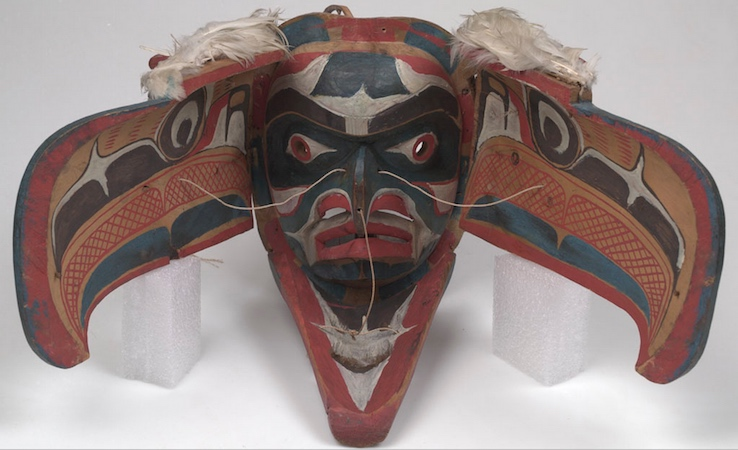AP Art History: Indigenous Americas
Mesa Verde
Location: Montezuma County, Colorado
Ancestral Puebloan (Anasazi)
Date: 450-1300
Material: Sandstone
Built into cave; dwellings built both on top and in/along the mesas, over 500 structures; made of stone, mortar and plaster
Used for ceremonies, though not specifically the MV structures, both residential and ceremonial; originally covered, but no roofs now, space around buildings was a plaza; circular and rectangular rooms for living; smaller rooms for storage
Kivas- underground circular rooms for ritual purposes; murals and other paintings decorated the walls; storage rooms off the hearth have holes to reach into
Mesa Verde means green table - refers to the mountains
Ancestral Puebloans lived in Mesa Verde for about 850 years
Mostly sedentary farmers
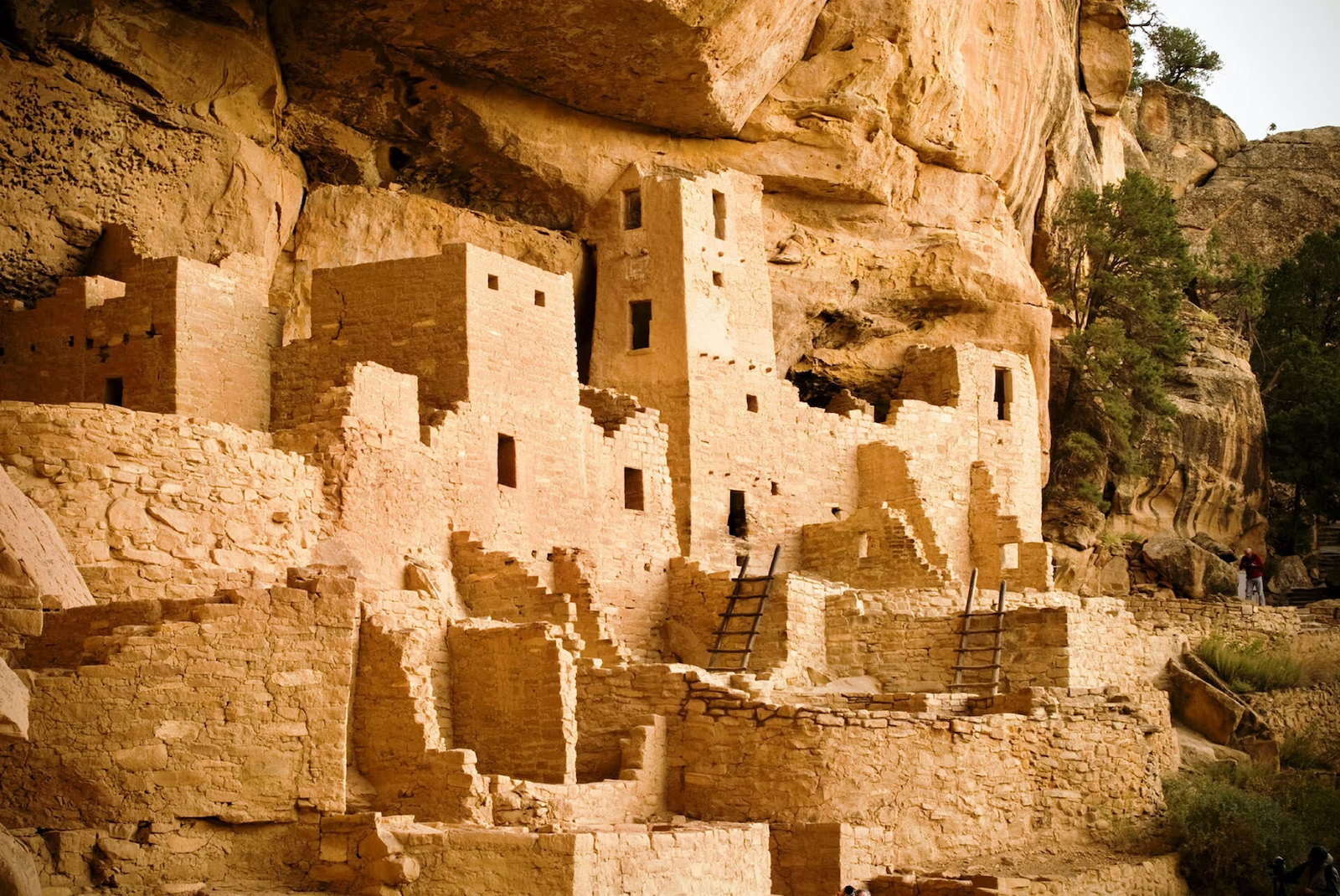
Painted Elk Hide
Location: Wind River Reservation, Wyoming
Date: 1890-1900 CE
Attributed to Cotsiogo (American name: Cadazi Cody), Eastern Shoshoe
Pigment in elk hide; combination of free-hand penciling and stencil; colorful animals and human-like figures
Economic and cultural benefit of the Wind River Reservation; created sales from white visitors and led them to attend Sun and Wolf dances; helped move tribe artwork into the modern world by making it contemporary
Displays important ritualistic Sun Dance and Wolf Dance; Sun Dance was especially ceremonial and used to honor deities
Depicts daily life on the Wyoming reservation such as men hunting buffalo on horses and women sitting near fires at a campsite (teepee)
Painting on animal hides is a tradition in the Great-Basin region
Helped keep the economy and culture alive
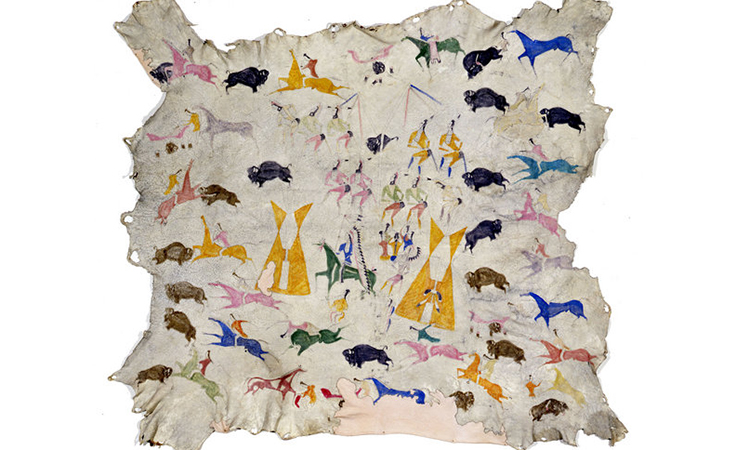
Black on Black Ceramic Vessel
Location: Puebloan Culture, New Mexico
Date: Mid 20th century
Materials: ceramic, mixed with volcanic ash for black color
Pot made by building up coils (not a wheel)
Olla - traditional shape used by Puebloans for storing water (rounded pot)
ollas and similar dishes hold water, store seed and grain, used for cooking;
Martinez's pieces became known as fine art and were purchased for the purpose of being art
Images in the pot based on rain clouds, feathers, corn, and rivers
Transformed functional tradition of Puebloan pottery into symbols of culture and works of decorative art that became status symbols for many American collectors;
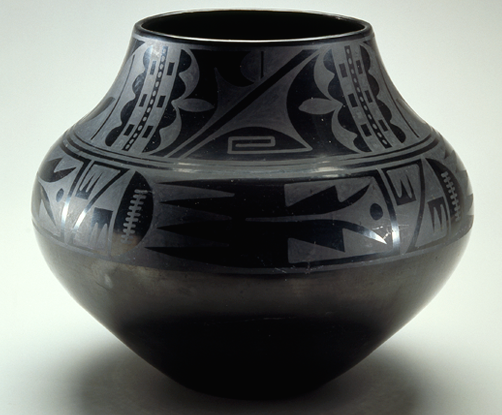
Great Serpent Mound
Location: Adams County, Ohio; Missispian (Eastern Woodlands)
Date: 1070 C.E
Earthwork/Effigy - Dirt
1300 Feet long (1/4 of a mile)
Conforms to the natural topography of the area
Head faces east and tail faces west; head aligns with the summer solstice sunset; tail points to the winter solstice sunrise
Snakes, which were seen to have supernatural powers, were often incorporated into spiritual rituals;
astrological alignment; may have served as a natural compass could have marked Haley's Comet event; debate over purpose continues
Created by Native American Tribes who lived in the alleys of the Ohio, Missouri, Mississippi, and Illinois rivers.
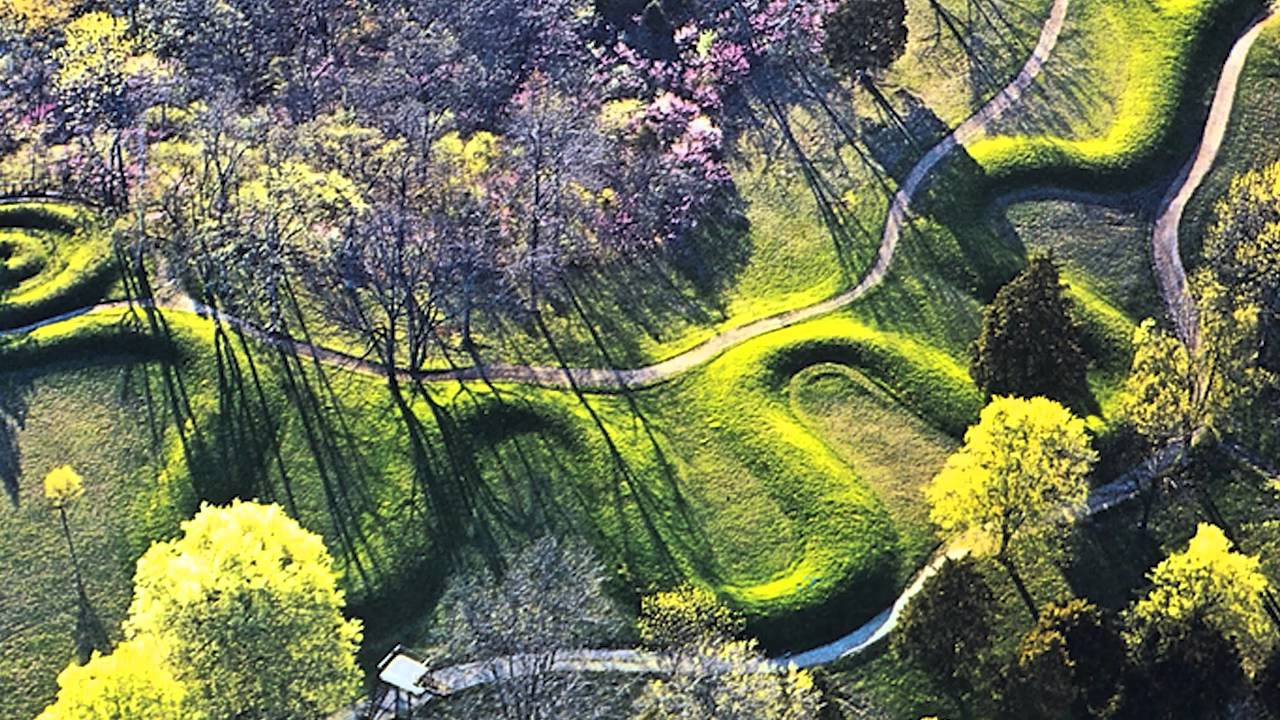
Kwakwaka’wakw Transformation Mask
Location: Northwest Coast of Canada
Date: Late 19th Century
Materials: red cedar wood, string, and paint
Large, exaggerated bird head; large beak
Opens up to show human-like face
Bright colors - blue, red, white, yellow, black, and brown
Hair made of string and feathers
creates powerful effect during ceremonies; worn during potlach (ceremonial feast to displace wealth) where host displays status; conveyed high social status; portrayed familiy genealogy - family crests; passes between family members
Worn during dance ceremonies
Takes years to make
Carving techniques changed after tools were introduced by Europeans - brighter synthetic colors also introduced
